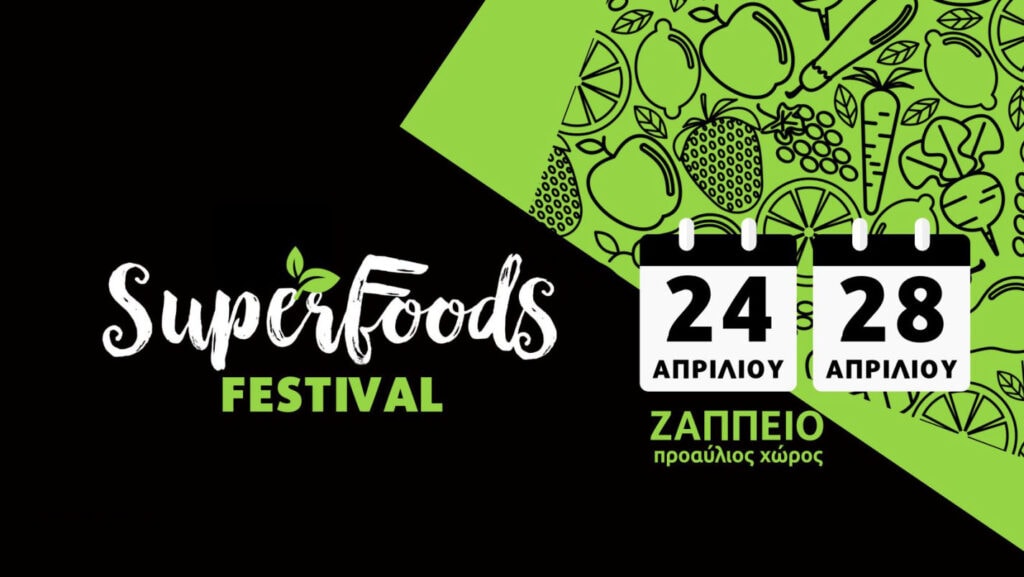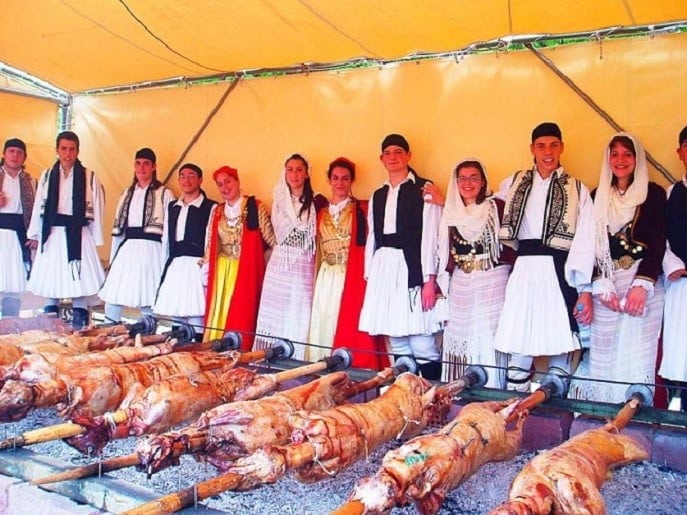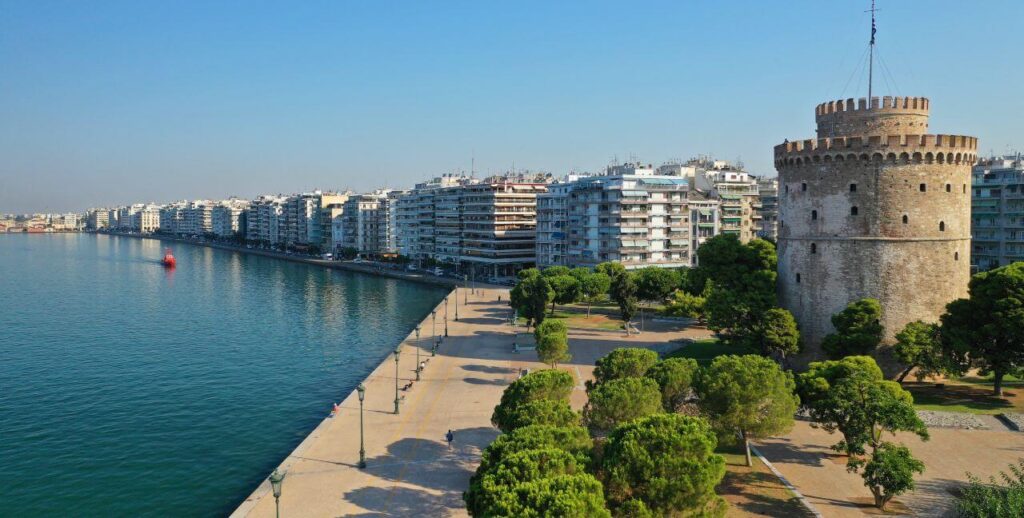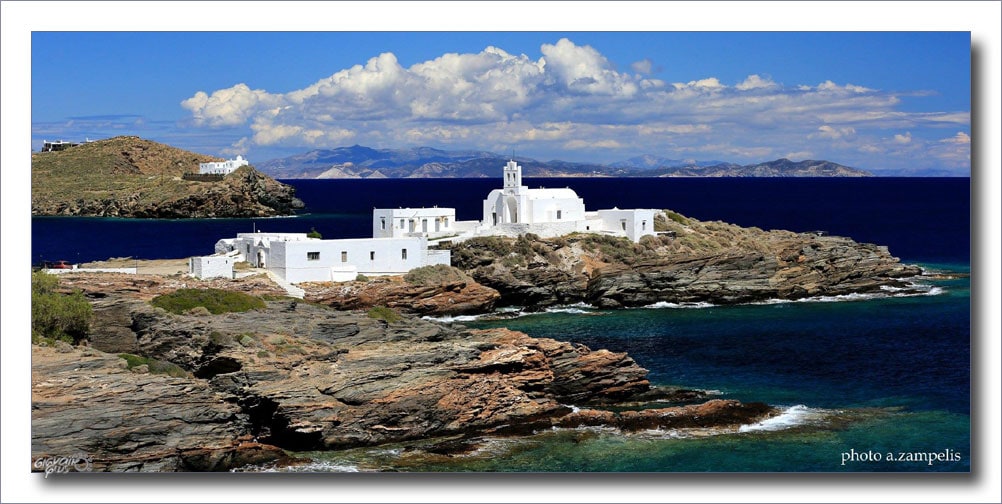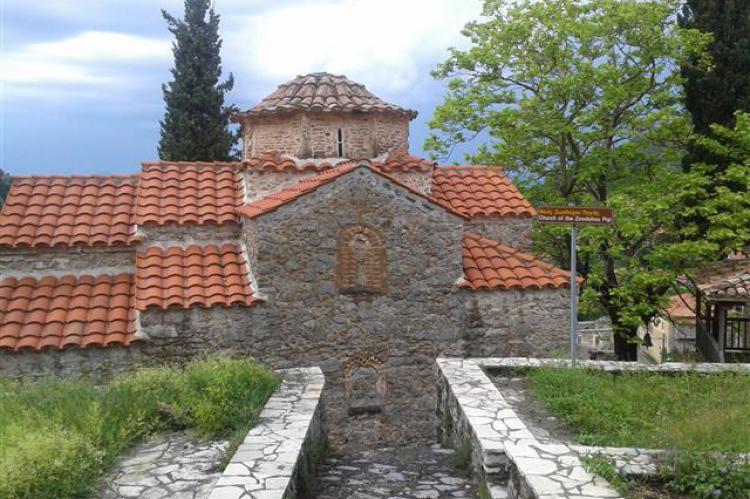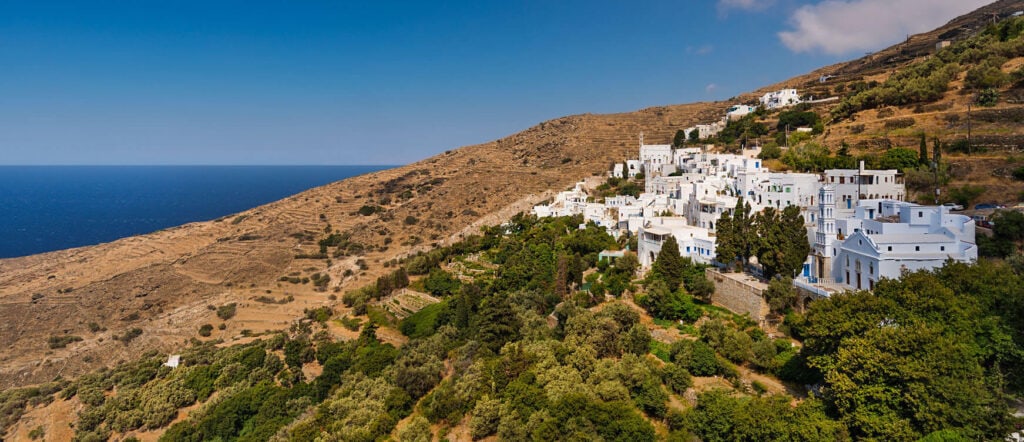Lefkada is the fourth largest of the Ionian Islands, with influences mainly from the Venetian occupation. With a mountainous terrain where the crops are cultivated on terraces supported by stone walls, the most suitable, yet few, vegetable types are grown. These include green broad beans, fasolakia (small beans) and ambelofassoula. Part of the crop is dried for the winter.
What everyone knows and buys in Lefkada is salami aeros, a salami with a light aroma of garlic and whole peppercorns, and also the pork sausage that is cooked roasted or fried and quenched with red wine.
Eglouvi lentils is a very tasty local variety of lentils that are cooked in a characteristic traditional way, but also cooked as a classic soup or water-boiled with vegetables, like a salad.
The local olive oil and the wine from the white variety Vardea and red Vertzami.
Other traditional products include seafood, avgotaraho and fish grown in divaria, the traditional technique of fish-rearing and fishing in the lagoons of Amvrakikos Gulf. In Lefkada people love fish – especially salted cod and salted sardines, which are everywhere – and their seafood, which is very tasty. They prepare salted cod bianco (salted cod with oil, lemon, garlic and onion), boiled fish with green grapes, small fry pasted with red pepper, savoro, cuttlefish cooked in their ink or cuttlefish with fennel and tomato, octopus with wine in the oven, steamed mussels, fried small shrimp from the lagoon of Lefkada, maridopita (puff pastry) (pita with filo, small pudding and rice), as well as bonito or mackerel baked on tiles.
They also cook fava beans from Karyas, rooster pastitsada with thick spaghetti, beef with red sauce and quince, as well as a boiled salad with tamarisks, which usually accompanies fish. Traditional also is the tiropita kouloura in a roll, as well as riganada, an appetizer consumed as a post-breakfast nibble: dry bread that is soaked with water drizzled with olive oil and vinegar, sprinkled with oregano and served as a meze with tomato and salted sardines.
There certainly are several influences stemming from the Venetian rule, such as the savoro fish and the bianco, but also from their nearby mainland Greece, such as the frigadeli liver from Agrinio (with lamb suet). During periods of fasting chavarosoupa (a soup made from chavara, a kind of mollusc) and mussel soup are also very common.
For dessert, the most famous local dessert is the ladopita, a type of halva made from olive oil, flour and sugar, and baked in the oven. We also find pasteli, mandolato and mandoles, while in the villages, the houses have petimezi all year round, soutzouki, sun-dried moustalevria (a sweet based on grape must) and sykomaida, which are pita made from dried figs with almonds and spices, all wrapped up in ampelofilla (vine leaves).


